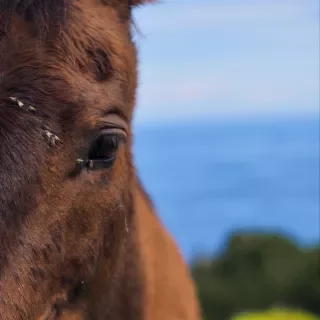Camera settings explained
Shutter speed
Shutter speed determines the sensor exposure time. It is expressed either in seconds or in a fraction of a second. Typical values in practices are ranging from 1/50s to 1/4000s.
As you can imagine, you need much light to be able to capture a frame at 1/4000s or more. This is usually a speed usable used outside during a sunny day. The max shutter speed value typically available nowadays range between 1/4000s and 1/32000s, such a speed is good to freeze a very fast moving subject.
Depending on the this speed, sharpness will be directly affected.
Sharpness and blur
There are two main types of blur, the one induced by your own hands shaking (even slightly), the other one due to the subject’s motion.
You can reduce both by increasing the shutter speed.
However, motion blur is sometimes desirable when the intent of a photograph is to convey the idea of movement. Then choosing to lower shutter speed on purpose would make sense.
Aperture
Aperture is qualifying the opening of your lens. Phones are so small that they almost always open at their max aperture, while cameras with larger sensors such as pro compacts, mirrorless and reflexes lenses have blades, which are deployed or folded to change their aperture.
This is why you have or will probably hear about « wide aperture » to qualify lenses with a big rating, which can mostly be considered at f2.8 and below.
A low aperture number means a wider aperture. This f-number is called F-stop.
Why the F ?
This F-stop number is not to be confused with the focal length of your lens. The focal length determine how far it sees, while the F-stop is the focal length divided by the diameter of the lens.
By the above maths you can guess that biggest aperture are found on big and heavy lenses. These are also called fast lenses due to their ability to be used with high shutter speed while keeping a high exposure value.
Enough theory, in practice, you mostly need to know that the purpose of the aperture is to change the amount of light given to the sensor, and that will affect the exposure value and ligthness at at any given shutter speed.
Lenses with low F-stop apertures is also what makes beautiful blurry background called bookeh, or shallow depth of field. This type of blur is derived from the lens optical properties, and the kind of halos depends on the shapes of the lens blades. That is to say you will never find the exact same style of halos and bookeh between different lenses and especially not on phones. Some movie lens manufacturer even found a special market to sell oval bookeh lenses.
ISO
Iso relates to how much sensitive to light your sensor is. A high ISO settings will results in a brighter picture, to such an extent that it can emulates day light at dusk.
If you have a lowcost webcam, have you ever noticed how slow it becomes the darker your room is ? Make this experiment : setup your laptop or phone camera in its highest resolution, start filming and observe how it progressively becomes slower or shows motion stutters (meaning low framerate) or will introduce noisy artifact in the image, as you progressively close curtains in your room (without turning on the lights of course), or as the sun goes down. This experiment shows that a digital camera sensor will need more or less processing power to capture low light sources. When the ISO value is raising, it is amplifying the power of the signal in a similar way an audio amp would raise the volume of a guitar and produce noise.
High ISO with low noise is one of the aspects of technological improvements for cameras in recent years (as well as faster focusing).


